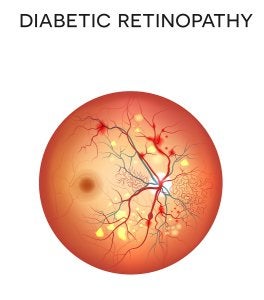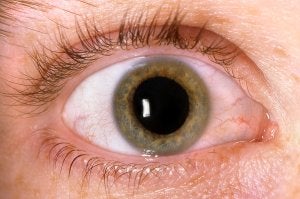-
How to Tell if LASIK is Right For You
If you’re tired of wearing eyeglasses or contact lenses and are considering another form of vision correction, you may be wondering if you should visit an ophthalmologist for LASIK surgery in Chicago . LASIK is an incredibly safe and effective method of eye surgery, and has high success rates for vision correction. An ophthalmologist at an optical center near you can provide a LASIK consultation to determine if you are a good candidate for LASIK eye surgery.
Watch this video for some helpful information about how LASIK vision correction is performed. Dr. Alan Wagner, an experienced ophthalmologist, discusses some of the ways that you can tell if LASIK surgery is the right form of vision correction for you.
-
Get the Facts About Diabetic Eye Disease
 If you suffer from diabetes, you’re at an increased risk of developing a number of serious health complications, including eye problems like diabetic eye disease. For this reason, it’s crucial that you visit your ophthalmologist in Chicago regularly for eye exams and comprehensive eye care. Here are some important facts about diabetic eye disease that you should discuss with your eye doctor.
If you suffer from diabetes, you’re at an increased risk of developing a number of serious health complications, including eye problems like diabetic eye disease. For this reason, it’s crucial that you visit your ophthalmologist in Chicago regularly for eye exams and comprehensive eye care. Here are some important facts about diabetic eye disease that you should discuss with your eye doctor.What is Diabetic Eye Disease?
Diabetic eye disease is a group of eye conditions that eye doctors commonly diagnose in people who have diabetes. These eye conditions include diabetic retinopathy, diabetic macular edema, cataracts, and glaucoma. These conditions are either caused by diabetes or diabetes complications. When someone with diabetes has chronically high blood sugar, the blood vessels in the retina may become damaged, resulting in diabetic retinopathy. If untreated by an ophthalmologist, this condition may progress to diabetic macular edema, which causes a build up of fluid in the retina that eventually results in blindness.
Symptoms of Diabetic Eye Disease
In its early stages, diabetic retinopathy does not cause any significant symptoms. The longer that the condition progresses without intervention by an eye doctor, however, the more severe the symptoms will become. The retinal blood vessels can begin to bleed and cause an increase in floaters in the eye. If the condition progresses and diabetic macular edema develops, you will experience blurred vision, other changes in vision that resist attempts at vision correction, and eventually, complete vision loss.
How Your Eye Doctor Can Treat Diabetic Eye Disease
Once diabetic retinopathy progresses to diabetic macular edema, your eye doctor has a few different eye care treatment options. Depending upon your symptoms, your ophthalmologist may recommend laser eye surgery, or medication. Laser eye surgery corrects damaged and leaking blood vessels in the retina using laser heat. Your eye doctor may also try to correct macular edema via corticosteroid injections, or anti-vascular endothelial growth factor. These injections can be used in addition to, or instead of, laser eye surgery.
-
Answering Common Questions About Diabetic Eye Disease
 People with diabetes must visit their ophthalmologist or eye doctor in Chicago regularly for eye care. Diabetes increases your risk of developing certain eye conditions, including diabetic eye disease, vision loss, and blindness. To lower this risk, and your need for future vision correction, you should take the time to learn more about these eye conditions, start by reading these answers to common questions about diabetic eye disease.
People with diabetes must visit their ophthalmologist or eye doctor in Chicago regularly for eye care. Diabetes increases your risk of developing certain eye conditions, including diabetic eye disease, vision loss, and blindness. To lower this risk, and your need for future vision correction, you should take the time to learn more about these eye conditions, start by reading these answers to common questions about diabetic eye disease.What Eye Conditions Are Grouped Among Diabetic Eye Diseases?
Diabetic eye disease encompasses a group of eye conditions for which someone with diabetes may be at increased risk. These conditions include glaucoma, cataracts, and diabetic retinopathy. Glaucoma results from an increase of the fluid pressure within the eye, which eventually causes optic nerve damage and vision loss. Cataracts are caused by a clouding of the eye’s lens, leading to vision problems that require eye correction. The most common is diabetic retinopathy, which is caused by damage to the retinal blood vessels.
What Are Their Symptoms?
Glaucoma causes few initial symptoms, and most patients don’t realize that they have the condition until they suffer from peripheral vision loss. The condition can also cause headaches, blurred vision, eye pain, eye redness, nausea, tunnel vision, and seeing halos around lights. Cataract symptoms include vision that is cloudy, dimmed, or blurry, seeing halos around lights, light sensitivity, poor night vision, distortion of color perception, and a need for progressively increased vision correction. Symptoms of diabetic retinopathy occur later in the disease’s progression, and include floaters, blurry vision, impaired color vision, an intermittent need for vision correction, and vision loss.
How Can I Prevent Diabetic Eye Disease?
You can’t prevent diabetic eye disease, but you can significantly lower your risk of developing an eye condition, or of suffering from vision loss if an eye condition develops. If you suffer from diabetes, you must visit your ophthalmologist for eye care once a year, including a comprehensive, dilated eye exam. If your eye doctor detects symptoms of an eye condition early enough, your treatment and vision correction will be much more effective.
-
What are the Differences Between Floaters and Flashers?
 Floaters and flashers impair vision, and may be symptomatic of a more serious eye condition. If you experience persistent or progressively worsening floaters or flashers, you should visit an eye doctor or ophthalmologist in Chicago for eye care as soon as possible. Both floaters and flashers result from changes to the vitreous fluid caused by aging.
Floaters and flashers impair vision, and may be symptomatic of a more serious eye condition. If you experience persistent or progressively worsening floaters or flashers, you should visit an eye doctor or ophthalmologist in Chicago for eye care as soon as possible. Both floaters and flashers result from changes to the vitreous fluid caused by aging.Floaters appear as small, moving specks that interfere with your vision. They are caused by the movement of small cells or clumps of material in the vitreous fluid that cast shadows on the retina. Flashers appear as sudden and swift flashes or streaks of light, which may occur intermittently and persistently for several weeks.
As you age, the vitreous fluid shrinks, forming clumps or strands. If it detaches from the wall of the eye, known as posterior vitreous attachment, you’ll experience floaters and flashers. If you’ve sustained an eye injury, are over 45, or have severe nearsightedness, you should visit an eye doctor or ophthalmologist immediately after a sudden increase in floaters or flashers, loss of peripheral vision, or a sudden need for vision correction. These may be symptoms of retinal detachment, which may cause blindness.
